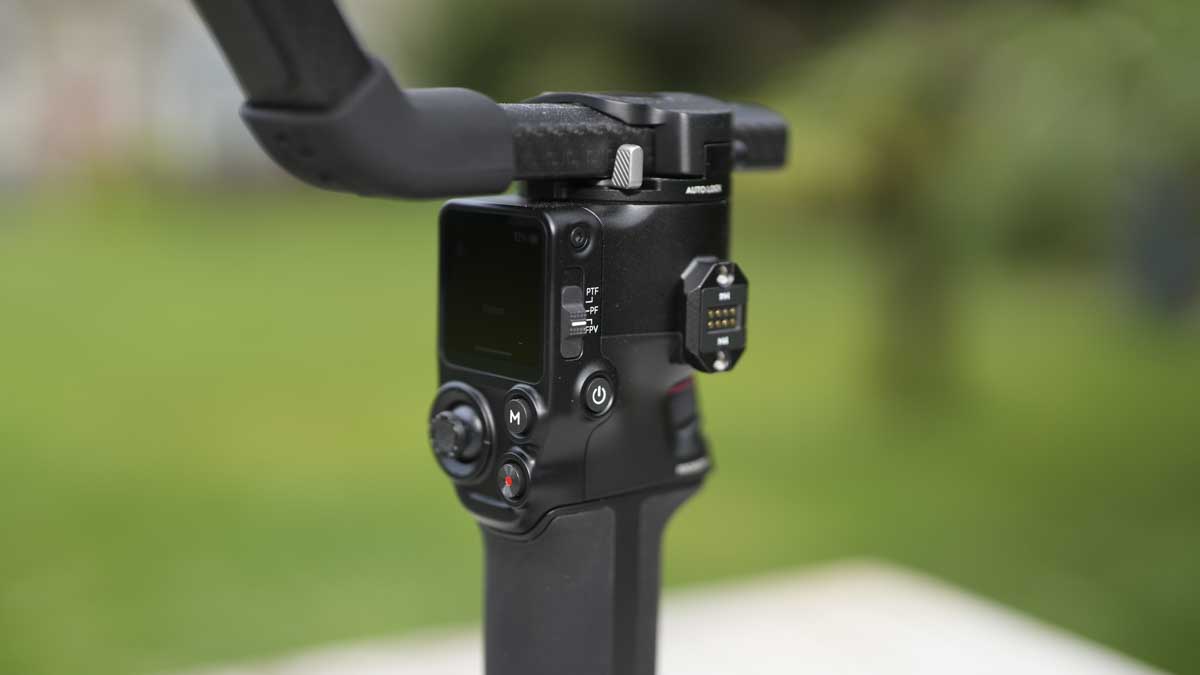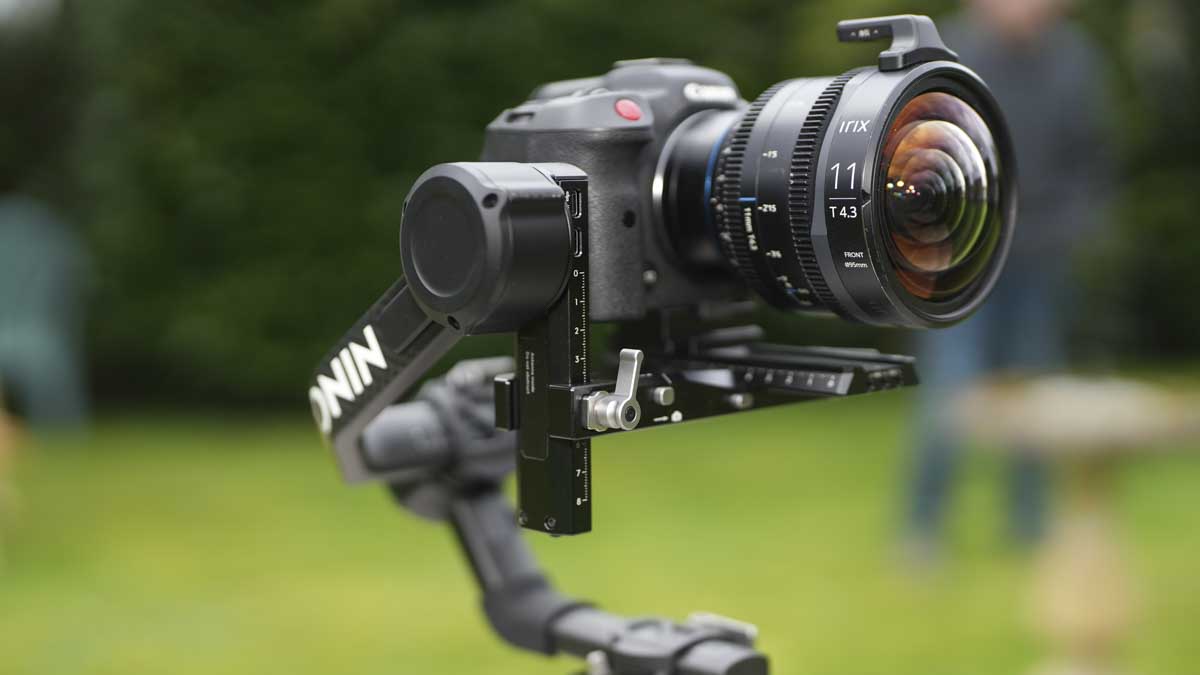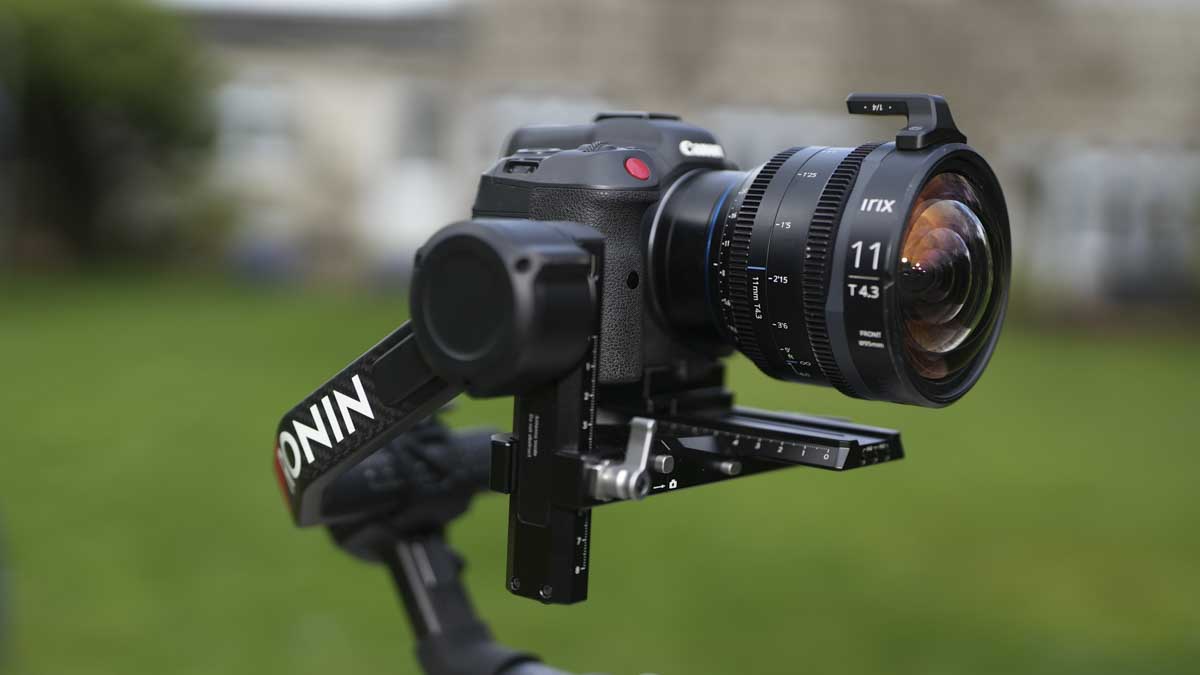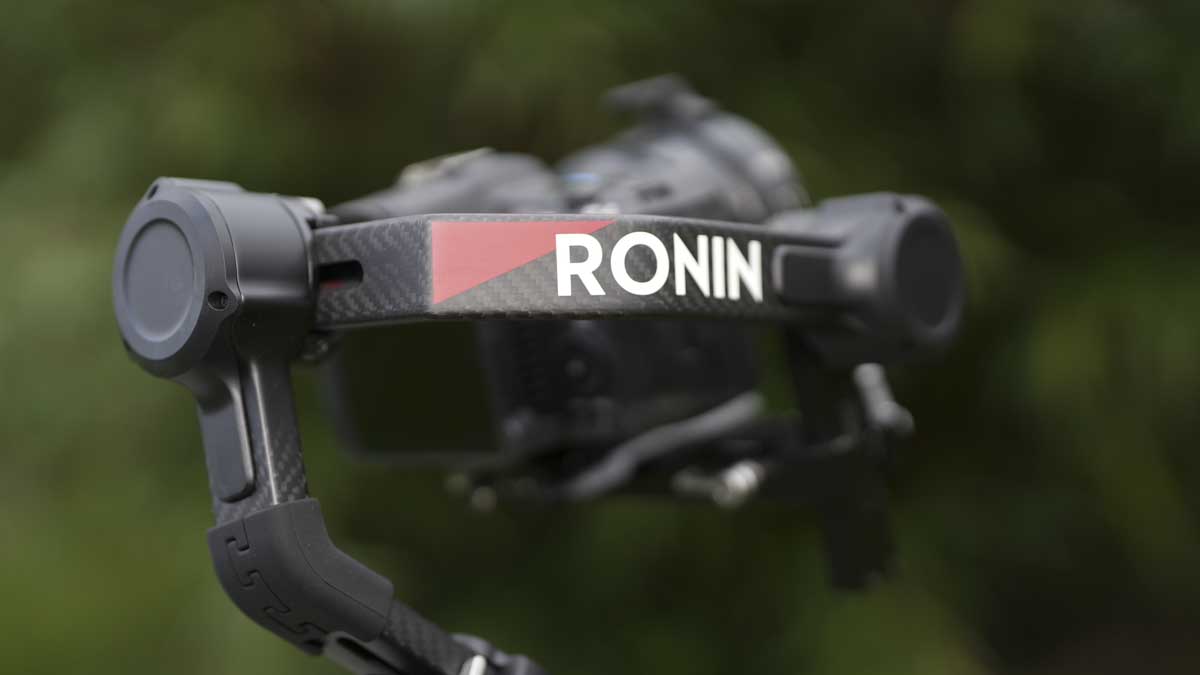The design and features of DJI’s single-handed gimbal stabilizers have evolved over the years. Since the RS 2 Pro, which introduced the carbon arms, there has been a steady progression towards the professional market rather than smaller studios and individuals. The great thing about the RS Pro gimbals is firstly their compact size, but then the power and accessories, meaning that you can start small, with just the gimbal, and then begin to build up your system with focus motors, video transmission, handles, LiDAR, and more.
The RS 4 Pro continues this route to the top, and the new gimbal comes in the usual gimbal-only or Combo kit, which includes the focus motor and RavenEye video transmission system, which is the kit that I’ll look at in this review. It’s pretty comprehensive, and if you want to expand further and have manual lenses, then I would highly recommend looking at the LiDAR sensor, which brings autofocus to your manual lenses. Then there’s the new range of focus handles and grips, along with the larger car mounts and pro-level systems.
When it comes to the build and handling, it’s worth knowing that the RS 4 Pro is the core of a larger ecosystem, one that has now been opened up to third-party developers, so things should get really interesting, primarily for video. Still, there’s also huge potential for photography.

Build quality
One of the consistent qualities of DJI products is their ergonomics, build, and material quality, all of which shine through with the RS 4 Pro. The carbon arms featuring the large Ronin logo instantly stand out, and with the small 1.8″ touch screen, joystick, and control wheel, all the controls you need are within your finger’s reach. Another notable feature of the RS 4 Pro, compared to other gimbals, is the number of expansion ports. These ports allow you to attach handles, grips, and accessories through the screw-in RSA ports or clamp NATO ports. The ports on either side of the RS 4 Pro also enable data transfer for compatible accessories, which is very clever.
The main materials for the gimbal are a mix of rubber, aluminium, and carbon, which all feel good and solid. As ever, there’s plenty of adjustment through the three axes when it comes to balancing. As I’ve mentioned in previous reviews of the RS Pro series, the carbon arms can be a pain for accurate adjustment when new, as they are here, but soon ease up after a few weeks of use. It’s worth noting with the RS Pro series that once you’ve gone through the setup process once, it’s beneficial to mark the positions on the arms so you can readjust and balance quickly. However, I found that with the CINE lenses and kit that I used in this review, once the cameras were balanced the first time, as the lenses were essentially the same size and weight, there was no reason to rebalance, which again reinforces why buying a set of dedicated CINE lenses such as the IRIX lens range is such a great idea.
When it comes to building quality, the finish is exceptional, and from my experience with the RS 4 Pro that I’ve been testing for the last month, the need for adjustment becomes less and less to the point of none the more you use it.
Balancing the RS 4 Pro
The RS 4 Pro’s balancing follows the usual procedure, but it’s important to consider beforehand which accessories, if any, you’re going to mount along with the camera. If it’s just the camera, then there’s a small base plate that can be fitted; otherwise, there’s a slightly extended version that allows you to add the rail and focus motor. If you have the focus motor, then opt for the larger one, as you’ll inevitably swap at some point.
Once the camera is installed, release the arms and hold the camera roughly in position, then relock all but the tilt arm. Point the camera with the lens up, move the position up and down until you find the balance, and lock it. Then rotate the camera to be horizontal and use the fine-tuned knob to balance.

Next, address the roll axis: unlock and adjust the position, noting that the carbon arms can be a bit tight initially, then lock it. For the pan axis, tilt the gimbal forward at 45 degrees, find the balance, and lock it. Once finished, boot up the gimbal, activate it with the Ronin App, and run through the auto-calibration.
In future use, you’ll find you’ll just be popping the camera on and off, and the way the gimbal is designed now means that there’s no need to adjust each axis every time. The only thing that is worth doing every time is a quick auto-calibration as you’re getting everything else ready.
RS4 Pro in use
Once balanced and switched on, the DJI RS 4 Pro can be connected to the Ronin App. If you’re familiar with this, it’s much the same as ever, with the front trigger to centralize the camera, the joystick to move around, and the dial at the front to use the focus motor with a calibrated lens.
One thing that you do instantly notice is the weight; with larger cameras onboard, such as the Canon EOS R5 C with an IRIX 11mm mounted, it’s quite a strain on the arm at 4.7kg. At this point, the addition of an easy rig would be good. This weight also makes the rig feel quite top-heavy, and if you are going for a camera and lens combo of this style, then adding the handle from the combo kit is essential.
Once you have a comfortable hold on the gimbal, the positioning of the joystick and dials is well worked out and easy to access. With many cameras, you can also connect using a USB Type-C or Bluetooth, depending on the model. This enables you to access some of the camera settings and, most importantly, to start and stop recordings.

When it comes to handling, be prepared for what you can cope with. Kitting the RS 4 Pro with your largest camera and lens combo just because the gimbal can take it might be better. The gimbal might be able to cope, but there’s a high likelihood that after an hour, you won’t. The other point about handling is to be neat. The RS 4 Pro can get tangled in a mass of connecting wires; before you start, make sure everything is correctly connected and attached, and also ensure the wires are free from the axes so full motion and movement are possible.










